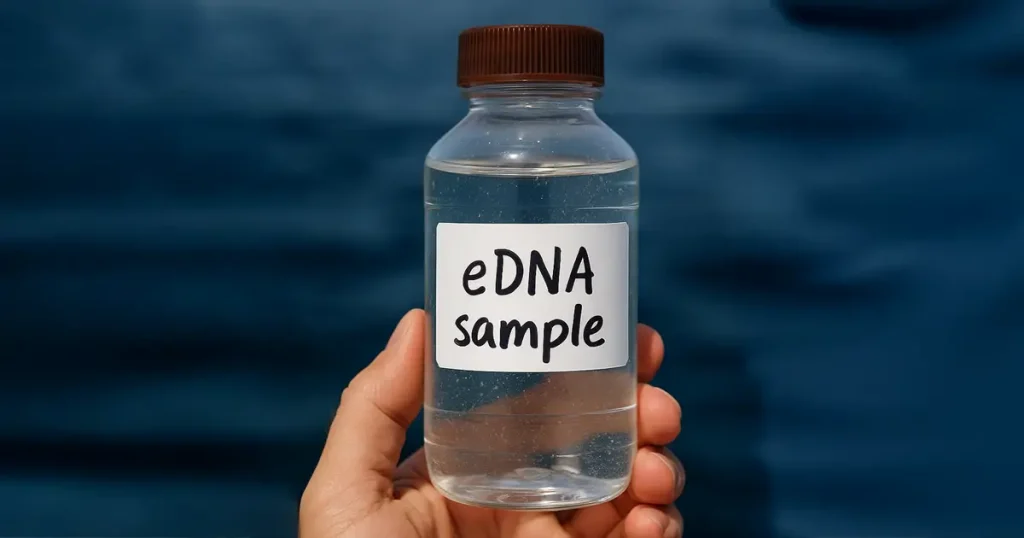Landmark Coral Reef Discovery Offers Glimpse Into the Past
Date: 5/6/2023
//Versión es español abajo.//

A team of international scientists recently discovered a deep-water coral reef in the Galápagos Marine Reserve (GMR) that has remained untouched for thousands of years. The scientists, hailing from the United Kingdom, the United States, and Ecuador, made this remarkable discovery while on an expedition to the GMR from March 27 to April 22. The reef was found at the peak of an underwater mountain that spans several kilometers between the islands of Santa Fe and San Cristóbal in the central part of the Archipelago.
The scientists explored more than a kilometer of the reef at depths ranging from 437 to 656 yards, revealing its beauty, high biodiversity, and coral fossils that provide valuable insight into marine conditions hundreds of thousands of years ago. The discovery of this pristine ecosystem is particularly significant given the devastating El Niño events of 1981-82 and 1997-98, which resulted in the loss of over 97% of the coral reefs in the GMR.
Danny Rueda, Director of the Galápagos National Park, underscored the importance of the discovery, noting that these pristine ecosystems have never before been monitored or studied. “Our commitment is to continue with the monitoring to safeguard the ecosystems and biodiversity that we have found,” he said.
The expedition was conducted aboard the deep-sea submersible Alvin, which provided valuable information about little-known underwater habitats. Alvin’s technological equipment allowed the scientists to access intriguing data from depths beyond the typical range of 44 to 66 yards. According to Jennifer Suárez, Head of Marine Ecosystems Monitoring at the Galápagos National Park Directorate, this expedition has allowed for a greater understanding of these areas and their biodiversity.
Washington Tapia, General Director of Galápagos Conservancy, and their sister organization, Conservando Galápagos, is enthusiastic about the reef discovery, which is the first of its kind in the Archipelago. Tapia highlighted the importance of the discovery not only for the biodiversity of Galápagos but also in paving the way for further research into this marine ecosystem.
The deep-water coral reef offers a rare opportunity to glimpse into its past and observe how it evolves in changing climate conditions. Above all, it underscores the need for continued exploration and monitoring of the world’s oceans to understand the importance of these unique and delicate ecosystems and protect them.

Descubren arrecife de coral nunca antes visto en las profundidades del mar de Galápagos
Un equipo de científicos provenientes del Reino Unido, Estados Unidos y Ecuador realizó una expedición en la Reserva Marina de Galápagos (RMG) entre el 27 de marzo y el 22 de abril. Durante su travesía, descubrieron un arrecife de coral de aguas profundas que ha sobrevivido en estado impecable durante miles de años. Este arrecife de coral es el primer registro de su tipo en el archipiélago de Galápagos.
El arrecife de coral fue encontrado en la cima de un monte submarino que se extiende por varios kilómetros entre las islas Santa Fe y San Cristóbal, en la parte central del archipiélago. Los científicos recorrieron más de un kilómetro del arrecife a una profundidad de entre 400 y 600 metros. Además de su belleza y alta biodiversidad, el arrecife es una fuente valiosa de información para el estudio de las condiciones marinas de hace cientos de miles de años, gracias a los corales fósiles.
Danny Rueda, director del Parque Nacional Galápagos destacó la importancia del hallazgo ya que se trata de ecosistemas prístinos, nunca antes monitoreados ni estudiados. “Nuestro compromiso es continuar con el monitoreo para salvaguardar los ecosistemas y la biodiversidad que hemos encontrado,” señaló.
La expedición se llevó a cabo a bordo del submarino “Alvin”, y permitió obtener información valiosa acerca de hábitats submarinos poco conocidos. Por lo general, es muy difícil obtener información de zonas con más de 40 a 60 metros de profundidad, pero gracias a estos equipos tecnológicos se ha podido acceder a datos muy interesantes. Según Jennifer Suárez, Responsable de Monitoreo de Ecosistemas Marinos de la DPNG, esta expedición ha permitido conocer más sobre estas zonas y su biodiversidad.
El descubrimiento del arrecife de coral en las profundidades del mar de Galápagos ha sido recibido con entusiasmo por el director general de Conservando Galápagos y filial, Galápagos Conservancy, Washington Tapia. Este hallazgo es especialmente significativo, debido a la devastación que sufrieron los arrecifes de coral en Galápagos después de los fenómenos de El Niño de 1981-1982 y 1997-1998. En aquel entonces, más del 97% de los arrecifes de coral en la Reserva Marina de Galápagos se perdieron. Por tanto, Tapia destaca que el descubrimiento no solo es importante para la biodiversidad de Galápagos, sino que abre la puerta a nuevas investigaciones sobre este ecosistema marino.



